
Corrosion coupon testing involves inserting the coupon into the water flow stream. This coupon’s weight is measured before and after. Corrosion coupons are placed in a coupon rack. They are removed at set time intervals. Often the material of a corrosion coupon is stainless steel, copper, aluminum, carbon steel, admiralty brass, or galvanized steel.
First set up a coupon rack on the recirculating loop in your water system. If you have various types of metal coupons, place the active metal in the first position (to prevent deposition from noble metals). Orient the coupon vertically to allow for debris to pass by and not accumulate. Make sure to record the exact time the coupon is placed and exposed to flowing water.
You should utilize a new or clean coupon sample when testing. The coupon should be removed with gloves (not your hands or abrasive tools). After the corrosion coupon is removed, immersing it in a cleaning solvent is recommended. Methylene chloride would work. The next step is to put it into an ultrasonic bath with the cleaning solvent for approximately 3 minutes. After this, put it in a hydrochloric acid solution (liquid hydrogen chloride). After drying, weigh the coupon.
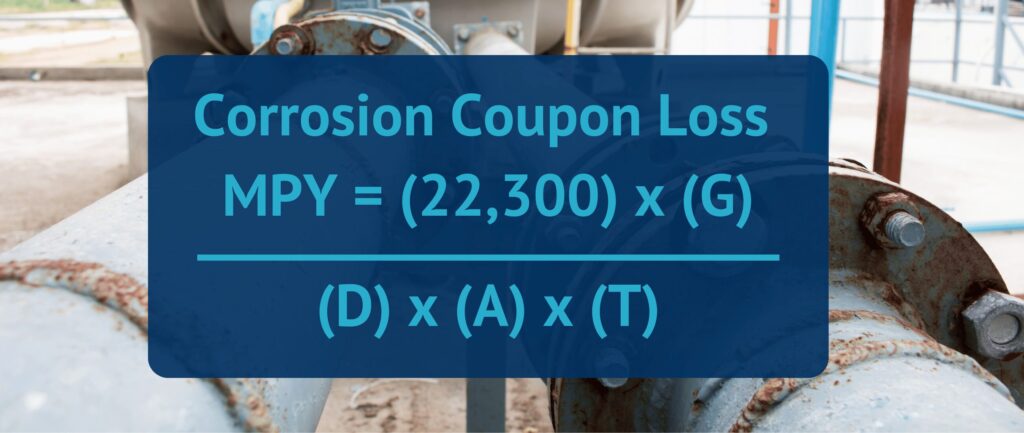
The following formula will be used to calculate the corrosion.
MPY = (22,300) x (G) / (D) x (A) x (T)
Many different types of corrosion can occur on the coupons. Pitting, cracking, crevice corrosion, etc. Categorizing the corrosion type will help determine what is happening in the system. Pits can be measured with a pit depth gauge tool. The relevant standards for corrosion coupons are as follows: NACE SP0775-2023, ASTM G4-95, and ASTM G31-21.
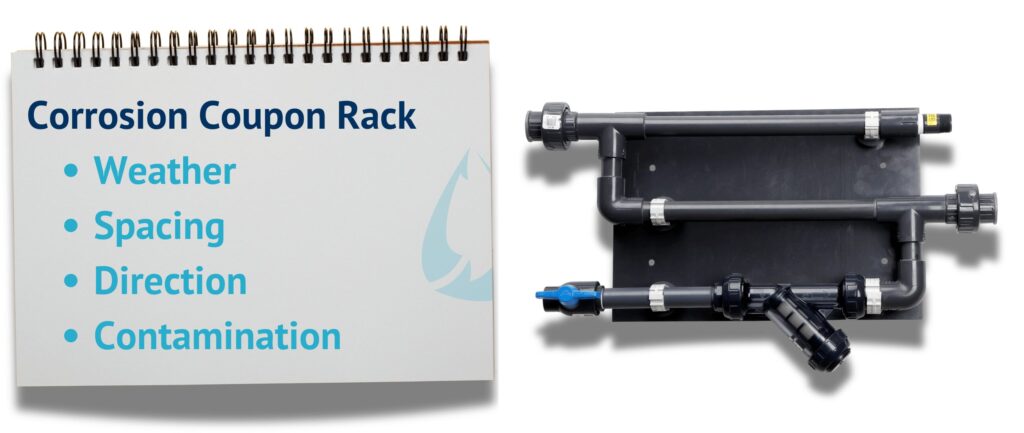
These typically have shutoff valves, flow regulators, and coupon holders. They should be resistant to corrosion themselves. In addition to handling the corrosion coupons properly, the rack must be installed and operated correctly. Some factors may impact the result of your corrosion study. Cooled water will lower corrosion, and heated water will increase it, so if you place it right before a heat source or right after a cooling tower it will impact the results. Check the weather for consistent temperatures, if the flow rate changes significantly the corrosion will differ. The direction and spacing you utilize will affect the results, so make sure to stay consistent for every open loop, closed loop, cooling tower, and boiler you utilize corrosion coupon racks on.
In addition to corrosion coupons, there are other types of coupons for water analysis. You can test with scale coupons and biofilm mesh coupons. Scale and biofilm mesh coupons are sized to fit in existing corrosion coupon racks.
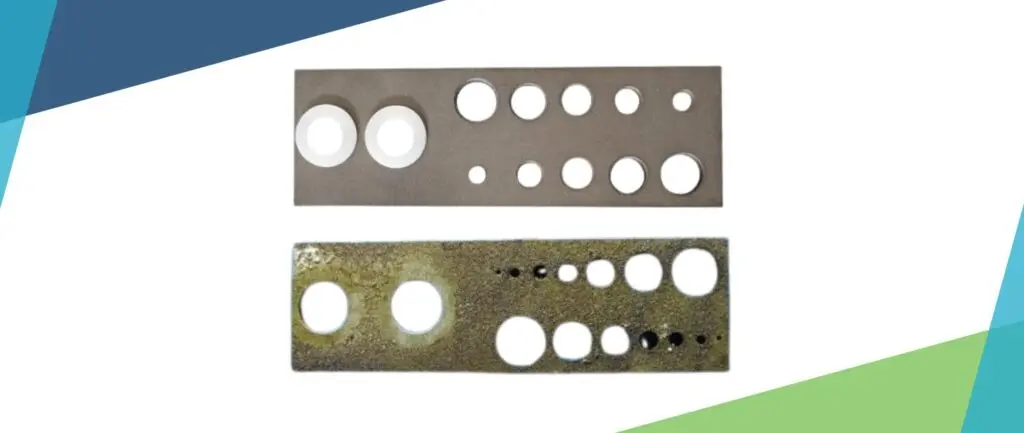
Scale coupons have several varying sizes of holes, like Swiss Cheese. Scale is more likely to form in holes or cavities. It is easier for scale deposits to create a layer on the smaller hole since there is less surface area to cover. The larger the hole with scale deposits, the larger the concentration of scale-forming minerals present in the tested water.
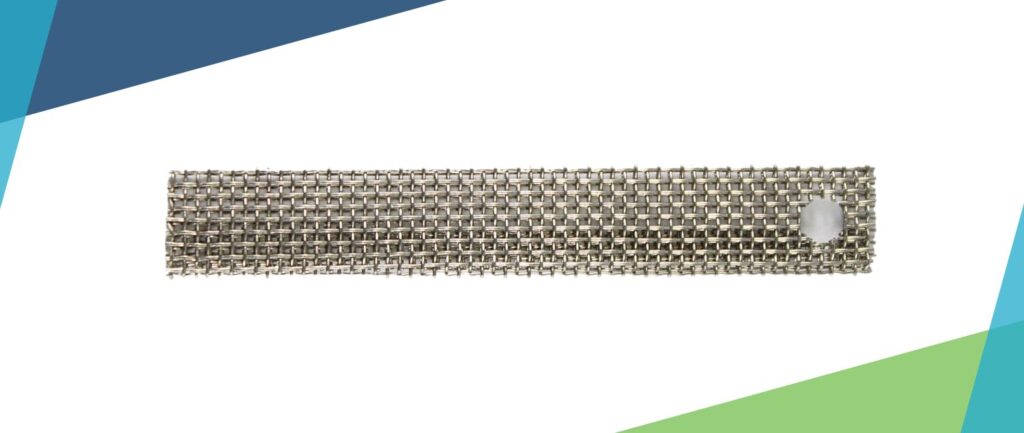
A biofilm coupon can measure the concentration of microorganisms in water. Microorganisms, including bacteria, form an organic layer called biofilm. This is typically made of a stainless-steel mesh. These crevices of this mesh provide ideal living conditions for microorganisms and biofilm creation. This sample is then sonicated/dispersed into sterile water. Total coliform bacteria, Legionella, and other tests can then be run using this sample.
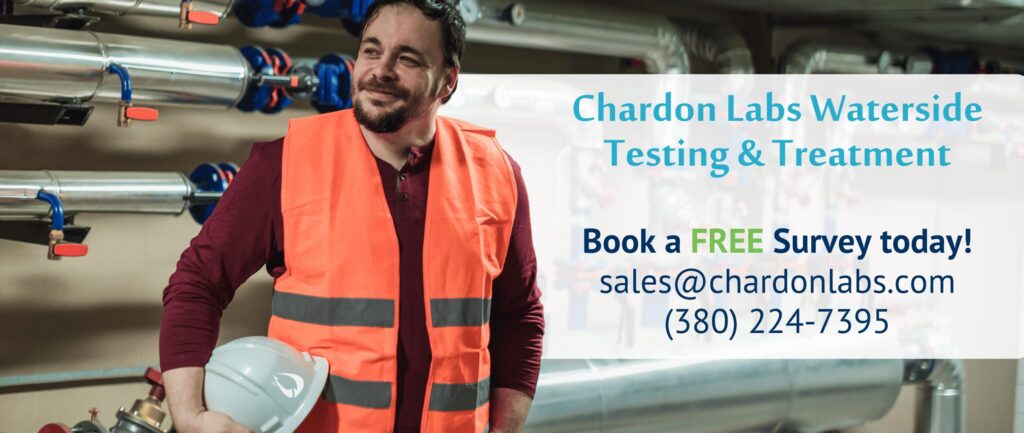
Chardon Labs tests and treats corrosion, scale, and bacteria in your heating or cooling system water. We utilize coupons in our water treatment service. We realize the cost these issues can create, from efficiency to system failure. To book a free consultation, reach out to us at (380) 224-7395 or fill out this quick contact form.